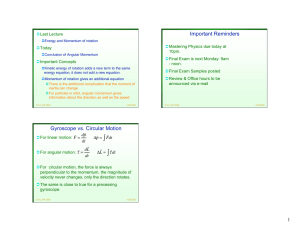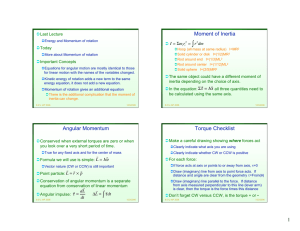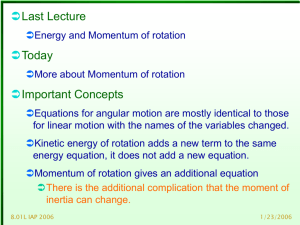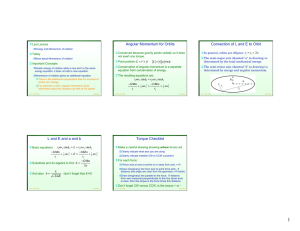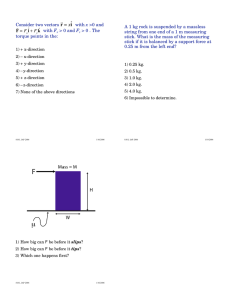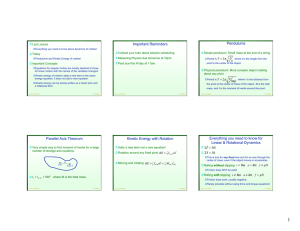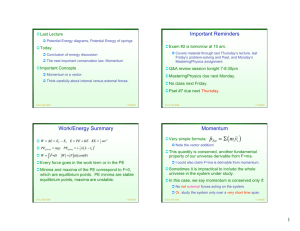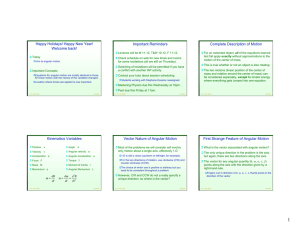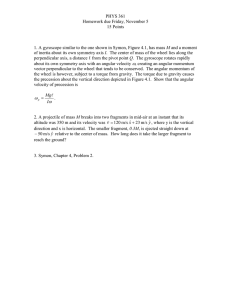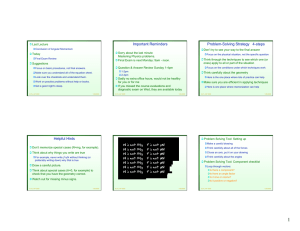Important Reminders
advertisement
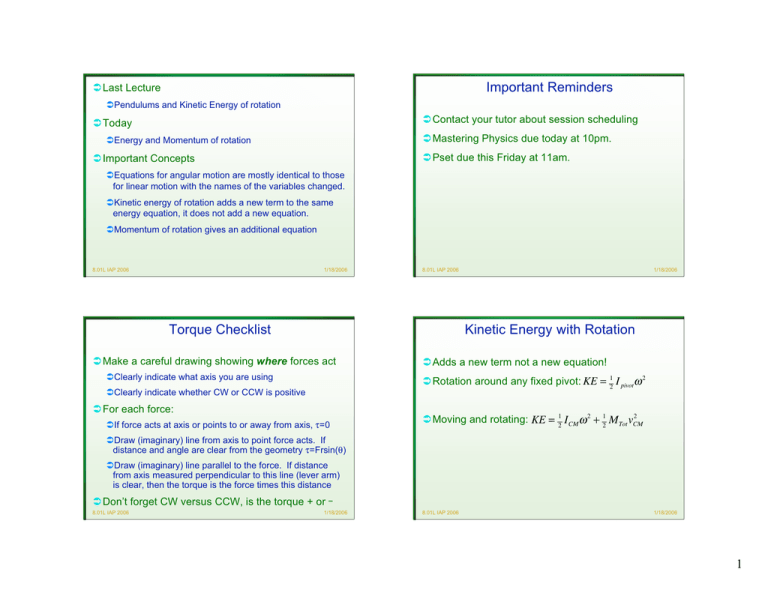
Last Lecture Important Reminders Pendulums and Kinetic Energy of rotation Contact your tutor about session scheduling Today Mastering Physics due today at 10pm. Energy and Momentum of rotation Pset due this Friday at 11am. Important Concepts Equations for angular motion are mostly identical to those for linear motion with the names of the variables changed. Kinetic energy of rotation adds a new term to the same energy equation, it does not add a new equation. Momentum of rotation gives an additional equation 8.01L IAP 2006 1/18/2006 8.01L IAP 2006 Torque Checklist 1/18/2006 Kinetic Energy with Rotation Make a careful drawing showing where forces act Clearly indicate what axis you are using Adds a new term not a new equation! Rotation around any fixed pivot: KE = 12 I pivot 2 Clearly indicate whether CW or CCW is positive For each force: If force acts at axis or points to or away from axis, =0 2 Moving and rotating: KE = 12 I CM 2 + 12 M Tot vCM Draw (imaginary) line from axis to point force acts. If distance and angle are clear from the geometry =Frsin() Draw (imaginary) line parallel to the force. If distance from axis measured perpendicular to this line (lever arm) is clear, then the torque is the force times this distance Don’t forget CW versus CCW, is the torque + or 8.01L IAP 2006 1/18/2006 8.01L IAP 2006 1/18/2006 1 Everything you need to know for Linear & Rotational Dynamics Kinematics Variables F = Ma = I This is true for any fixed axis and for an axis through the center of mass, even if the object moves or accelerates. Rolling without slipping: v = R a = R f µ N Friction does NOT do work! Position x Angle Velocity v Angular velocity Acceleration a Angular acceleration Force F Torque Mass M Moment of Inertia I Momentum p Angular Momentum J Rolling with slipping: v R a R f = µ N = Friction does work, usually negative. d dt = d d 2 = 2 dt dt Rarely solvable without using force and torque equations! 8.01L IAP 2006 1/18/2006 8.01L IAP 2006 Kinematics Variables Position x Angle Velocity v Angular velocity Angular Momentum Conserved when external torques are zero or when you look over a very short period of time. Acceleration a Angular acceleration Force F Torque Mass M Moment of Inertia I Momentum p Angular Momentum L = d dt = 1/18/2006 True for any fixed axis and for the center of mass Vector nature (CW or CCW) is still important Point particle: L = r p Conservation of angular momentum is a separate equation from conservation of linear momentum d d 2 = 2 dt dt Angular impulse: = 8.01L IAP 2006 Formula we will use is simple: L = I 1/18/2006 8.01L IAP 2006 dL dt L = dt 1/18/2006 2
